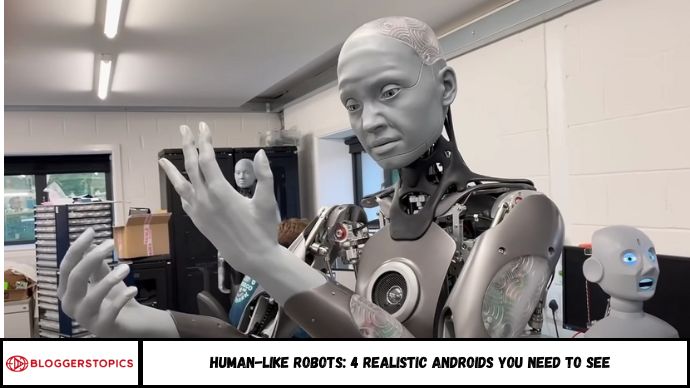Babies from bone marrow—once a sci-fi fantasy, now a scientific possibility. This article explores groundbreaking research into reproductive science, how scientists are exploring ways to create human eggs from stem cells found in bone marrow, and what that means for the future of fertility, especially for same-sex couples and women with infertility. Discover current facts, future prospects, ethical concerns, and the scientific truth behind this fascinating topic.
In a groundbreaking experiment, microbiologist Dr. Karim Nayernia from the North East England Stem Cell Institute has taken a major step in the field of reproductive science—by transforming stem cells from bone marrow into early-stage sperm cells.
Using a chemical solution designed to simulate the environment of the testes, Nayernia and his team successfully coaxed stem cells—harvested from male bone marrow—into immature sperm-like cells. This marked the first time that non-reproductive human tissue had been converted into gametes, the cells needed for reproduction.
A Radical Rethink of Parenthood
If further developed, this technique could one day enable men without sperm or even testes to father children using lab-grown sperm. But the implications go even further.
According to Nayernia, the technology could potentially allow two women to have a biological child together, without any male genetic contribution. The catch? The child would always be female, since sperm created from a woman’s cell would only carry X chromosomes, not Y.
Even more surprising: A woman might one day use sperm derived from her own bone marrow to fertilize her own eggs—a concept that raises serious scientific and ethical questions.
Scientific Skepticism and Ethical Concerns
Not everyone is convinced that the engineered sperm would be viable for actual reproduction. Dr. Renee Reijo Pera, a stem cell biologist at Stanford University, expressed skepticism. She noted that previous attempts to create sperm from embryonic stem cells resulted in unhealthy or short-lived offspring in mice, including those with extreme size abnormalities.
Nayernia acknowledges the uncertainty. He believes the immature sperm may become functional if transplanted into a human testis, but that next step awaits approval from his institute’s ethics board.
The Future of Fertility?
As stem cell research continues to evolve, the idea of creating life from bone marrow-derived cells challenges our current understanding of human reproduction. It offers hope for those struggling with infertility—but also opens a Pandora’s box of ethical and biological dilemmas that science is only beginning to grapple with.
Could Babies Be Created from Bone Marrow? Here’s What Science Reveals
Imagine a future where traditional reproduction is no longer the only path to parenthood. What if babies could be made—not from sperm and egg—but using bone marrow cells? This concept isn’t just science fiction. It’s rooted in emerging stem cell research and has sparked global curiosity and debate.
Understanding the Science Behind Babies from Bone Marrow
What Is the Basic Idea?
Researchers have been exploring ways to generate eggs (oocytes) from bone marrow-derived stem cells. The ultimate goal? Help individuals who can’t produce eggs naturally—such as women with ovarian failure or same-sex couples—have biological children.
Key Scientific Concepts:
- Bone marrow is rich in mesenchymal stem cells, which can differentiate into many types of cells.
- Under lab conditions, these stem cells can potentially be guided to become egg-like cells.
- Scientists hope to fertilize these lab-grown eggs with sperm to create embryos.
Breakthrough Research So Far
1. Early Mouse Studies Show Promise
In 2007, Dr. Karim Nayernia and his team in the UK were the first to create sperm-like cells from bone marrow in mice. This sparked interest in applying the reverse concept—creating egg cells from bone marrow.
2. Controversial Human Claims
In 2004, Dr. Jonathan Tilly claimed to have found egg-producing stem cells in women’s bone marrow, though this research has since faced skepticism and has not been definitively replicated.
3. Japan’s iPSC Revolution
In 2016, Japanese scientists successfully turned adult skin cells into egg cells in mice using induced pluripotent stem cells (iPSCs). This offers a theoretical basis for doing the same using bone marrow stem cells, as both are reprogrammable.
Potential Benefits of Bone Marrow-Derived Babies
For Women with Infertility
Women who have undergone chemotherapy or have premature ovarian failure might one day create genetically related eggs from their own bone marrow.
For Same-Sex Female Couples
If this technique becomes viable, one partner could potentially provide both the egg (via bone marrow) and the other the womb—opening up new paths to biological motherhood for both.
No More Donor Eggs?
This could reduce dependency on egg donors, offering more personalized and ethically comfortable fertility treatments.
Major Challenges and Ethical Concerns
- Safety Concerns: Lab-grown eggs may carry unknown genetic risks.
- Incomplete Development: So far, no human egg from bone marrow has led to a viable embryo.
- Regulatory Hurdles: Creating life from altered cells raises complex bioethical questions.
- Societal Impacts: If technology advances, it could disrupt traditional notions of reproduction and parenthood.
Current Status: How Close Are We?
Despite promising animal studies, no human baby has been born from bone marrow-derived cells. Much of the research is still experimental, and clinical application is likely years—even decades—away.
However, experts agree that stem cell-based fertility treatments are among the most exciting and revolutionary frontiers in reproductive medicine.
FAQs
1. Can bone marrow really be used to make babies?
Not yet in humans. Research is still experimental, mostly in mice.
2. Have any babies been born this way?
No. No confirmed human pregnancies have occurred using bone marrow-derived eggs.
3. Is this safe for the baby and mother?
Too early to know. Long-term health impacts are still unknown.
4. Could this work for same-sex female couples?
Theoretically yes, but it’s not clinically possible yet.
5. When might this be available?
It could take 10–20 years, depending on research breakthroughs and regulations.
Conclusion
While babies from bone marrow remain a theoretical concept, the science behind it is rapidly evolving. Stem cell technology continues to push boundaries—offering hope for couples facing infertility, same-sex families, and women who thought they’d never have biological children. But until safety and ethics catch up with science, this remains a possibility for tomorrow—not today.







